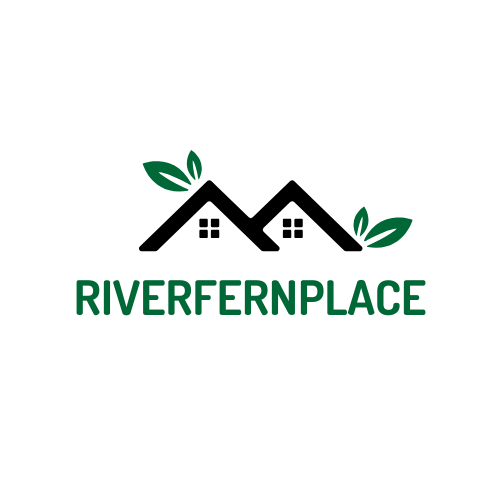In a world that glorifies hustle and bustle, slow living offers a refreshing antidote. Imagine trading in your frantic pace for a life where sipping coffee becomes an art form and sunsets are savored rather than rushed. It’s not just about taking a leisurely stroll; it’s about embracing moments that often slip through the cracks of a busy schedule.
Slow living isn’t just a trend; it’s a lifestyle that can transform stress into serenity. By prioritizing quality over quantity, individuals discover deeper connections with themselves and their surroundings. So why not hit the brakes on the chaos? Dive into the delightful benefits of slow living and uncover how this intentional approach can lead to a happier, healthier life. After all, who wouldn’t want to turn their daily grind into a leisurely stroll through life?
Benefits of Slow Living
Slow living emphasizes a lifestyle that embraces mindfulness and intentionality. By focusing on the present, individuals can cultivate meaningful experiences.
Definition of Slow Living
Slow living represents a conscious choice to prioritize quality over speed. Individuals who practice slow living seek to savor daily moments, finding joy in simple activities like cooking or walking. This approach fosters deeper connections with oneself, loved ones, and nature. It encourages creating space for reflection, allowing individuals to appreciate life’s nuances.
Origins and Philosophy
The roots of slow living trace back to the slow food movement in the 1980s, which promoted local, sustainable food practices. This philosophy expanded over time, embodying a broader lifestyle choice centered on mindfulness and intentional living. Embracing slow living aligns with various cultural movements that highlight simplicity and sustainability. It encourages individuals to slow down, resist consumerism, and connect with their environments. Prioritizing well-being and quality relationships emerges as a core tenet of this philosophy.
Benefits of Slow Living

Slow living offers several advantages that enhance overall well-being and quality of life. This deliberate lifestyle fosters mindfulness and awareness, allowing individuals to appreciate both everyday moments and larger experiences.
Improved Mental Health
The intentional pace of slow living significantly reduces stress levels. By focusing on the present, individuals cultivate a sense of calm that benefits their mental wellness. Practicing mindfulness allows people to acknowledge their feelings and manage anxiety effectively. Regular moments of reflection reinforce positive thinking and emotional resilience. Engaging in activities like meditation and journaling promotes inner peace, further enhancing mental clarity and stability.
Enhanced Relationships
Slow living encourages deeper connections with friends and family. Spending quality time together cultivates stronger bonds. Shared meals or leisurely walks create lasting memories and open communication channels. Prioritizing relationships over productivity fosters a sense of belonging and support. Individuals often find that engaging in meaningful conversations helps strengthen emotional ties and builds trust within their social circles.
Greater Environmental Awareness
Adopting a slow living philosophy cultivates a stronger connection to the environment. Individuals become aware of their consumption patterns and seek sustainable alternatives. Choosing local products or reducing waste encourages eco-friendly practices. Awareness of the impact of consumerism fosters a greater appreciation for nature. This lifestyle shift ultimately leads to healthier habits that protect the planet for future generations.
Increased Productivity and Creativity
Contrary to common belief, slowing down can boost productivity. By prioritizing focus and intention, individuals discover a more efficient approach to tasks. Creative thinking often flourishes in a less hurried environment, allowing ideas to develop organically. Time spent in reflection can lead to innovative solutions and improved problem-solving abilities. Many find that balancing work with leisure stimulates both productivity and originality.
Practical Tips for Embracing Slow Living
Embracing slow living involves intentional choices and mindful actions. Here are practical approaches to integrate it into daily life.
Mindful Practices
Integrating mindfulness into everyday moments promotes awareness and appreciation. Engaging in deep breathing exercises centers thoughts and reduces stress. Choosing to enjoy meals without distractions enhances the dining experience. Being present during conversations fosters genuine connections and understanding. Utilizing nature walks can instill a sense of grounding and tranquility. Practicing gratitude daily cultivates an appreciation for simple joys, reinforcing a positive mindset.
Creating a Balanced Routine
Establishing a balanced routine encourages sustainable living. Prioritizing time for hobbies enriches life and sparks creativity. Allocating specific time blocks for work and rest prevents burnout and maintains focus. Scheduling time for self-care activities nurtures well-being and restores energy. Planning family meals together strengthens bonds and fosters teamwork. Designing weekends for relaxation and exploration promotes a healthy work-life balance and enhances quality time.
Slow Living in Different Contexts
Slow living reflects its principles across various aspects of life, fostering intentionality and mindfulness in each setting.
At Home
Creating a serene home environment promotes relaxation and mental clarity. Prioritizing simplicity in home decor reduces distraction. Choosing plants and natural materials enhances a connection to nature. Cooking meals from scratch encourages mindfulness and savoring flavors. Embracing family rituals, such as game nights or shared meals, strengthens bonds and fosters deeper conversations. Reducing digital clutter through designated tech-free zones leads to meaningful interactions. Establishing a slower pace transforms home into a sanctuary for well-being.
In the Workplace
Implementing slow living at work enhances productivity and satisfaction. Focusing on one task at a time boosts concentration and reduces errors. Encouraging breaks allows for mental rejuvenation and fosters creativity. Structuring the workday with intentional pauses helps balance workload and self-care. Engaging in meaningful conversations with colleagues nurtures connections and teamwork. Reducing excessive meetings streamlines communication and increases efficiency. Embracing flexibility raises morale and cultivates a supportive work environment.
In Social Interactions
Slow living enriches social interactions with deeper connections and authenticity. Engaging in active listening fosters understanding and empathy. Prioritizing quality over quantity in friendships nurtures meaningful relationships. Organizing intentional gatherings encourages genuine conversations and shared experiences. Setting boundaries around social media fosters real-life connections. Savoring quality time with loved ones leads to lasting memories and emotional fulfillment. Emphasizing authenticity in interactions cultivates trust and strengthens relationships.
Cultivating a Fulfilling Existence
Embracing slow living can lead to a profound transformation in one’s life. By prioritizing mindfulness and intentionality, individuals can experience enhanced well-being and deeper connections. This lifestyle encourages savoring everyday moments and fosters a greater appreciation for the world around them.
As people adopt slow living practices, they often find reduced stress and improved mental health. The shift towards quality relationships and sustainable choices enriches their lives in meaningful ways. Ultimately, slow living isn’t just about slowing down; it’s about making room for what truly matters and cultivating a fulfilling existence.

